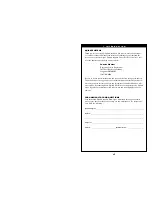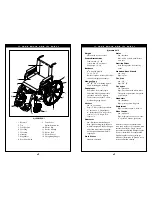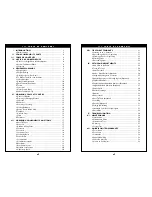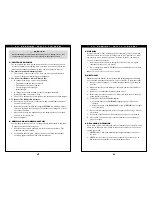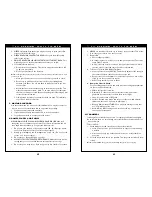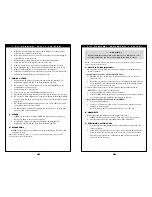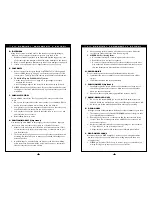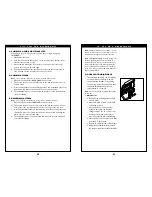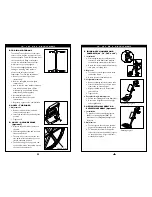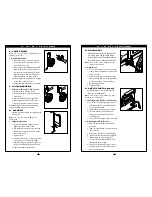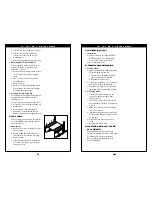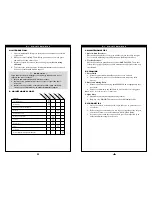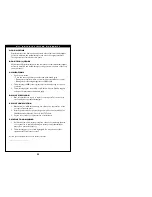
20
V I I .
W A R N I N G S :
C O M P O N E N T S & O P T I O N S
▲
!
2. To keep the rear wheels from rolling, always set both rear wheel locks
when you transfer to or from your chair.
3. Low pressure in a rear tire may cause the wheel lock on that side to slip
and may allow the wheel to turn when you do not expect it.
4. Make sure lock arms embed in tires at least 3/8 inch when locked. If you
fail to do so, the locks may not work.
M. MODIFIED SEAT SYSTEMS
Use of a seat system not approved by Quickie may alter the center of balance
of this chair. This may cause the chair to tip over.
1. Do not change the seat system of your chair UNLESS you consult your
authorized Quickie supplier first.
2. Use of a seat system not approved by Quickie may affect the folding
mechanism of this chair.
N. UPHOLSTERY FABRIC
1. Replace worn or torn fabric of seat sling and seat back as soon as you can.
If you fail to do so, the seat may fail.
2. Sling fabric will weaken with age and use. Look for fraying or thin spots, or
stretching of
fabric at rivet holes.
3. "Dropping down" into your chair will weaken fabric and result in the need
to inspect and replace sling more often.
4. Be aware that laundering or excess moisture will reduce flame retardation
of the fabric.
21
V I I I . T I P S F O R A T T E N D A N T S
A. LEARNING TO DO A "WHEELIE"
Follow these steps to help the rider learn to do a "wheelie":
1. Read and follow the warnings for "WHEELIES."
(See p. 13)
2. Stand at the rear of the chair. You must be able to move with the chair
to prevent a tip-over.
3. Keep your hands BENEATH the push handles, ready to catch the rider if
the chair tips too far back.
4. When you are ready, have the rider place his or her hands on the forward
part of the handrims.
5. Have the rider make a quick BACKWARD movement of the rear wheels,
quickly followed by a hard FORWARD thrust. (This will tilt the chair up
on the balance point of the rear wheels.)
6. Have the rider make small movements of the handrims to stay in balance.
B. DESCENDING A CURB OR SINGLE STEP
Follow these steps to help a rider descend a curb or single step going
BACKWARD:
1. Stay at the rear of the chair.
2. Several feet before your reach the edge of the curb or step, turn the chair
around and pull it backward.
3. While looking over your shoulder, carefully step back until you are off the
curb or stair and standing on the lower level.
4. Pull the chair toward you until the rear wheels reach the edge of the curb or
step. Then allow the rear wheels to slowly roll down onto the lower level.
5. When the rear wheels are safely on the lower level, tilt the chair back to
its balance point. This will lift the front casters off the curb or step.
6. Keep the chair in balance and take small steps backward. Turn the chair
around and gently lower front casters to the ground.
Before you assist a rider, be sure to read the warnings “FOR ATTENDANTS”
(pg. 11) and follow all instructions that apply.
Be aware that you will need to learn safe methods best suited to your abilities.
▲
!
W A R N I N G S


